Dogs on the fronts of the Great Patriotic
For millennia the dog was a special fighting animal. The Celts worshiped the god of war, Gus, who took the form of a dog. Dogs were valued, raised and trained as professional soldiers. However, in the twentieth century, much has changed. New types of firearms have appeared, such as a rifle and a machine gun. The price of life of individual fighters, including four-legged, fell to a minimum. Indeed, what could the dog oppose small arms. However, human friends did not disappear from the battlefields, they just had to master completely new professions.
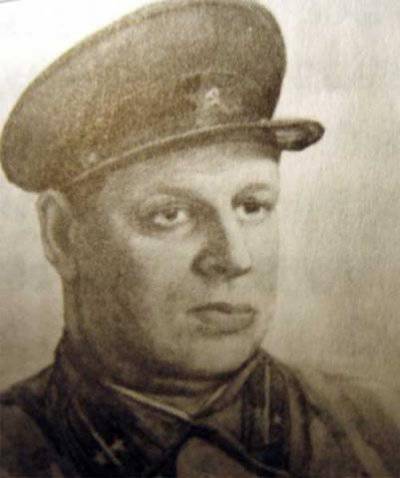 The ancestor of service dog breeding in the Soviet Union is considered a cynologist Vsevolod Yazykov. He has written many books on the training and use of dogs at the front. Later, the methods developed by him were used as the basis of theoretical and practical lessons with dogs in the army.
The ancestor of service dog breeding in the Soviet Union is considered a cynologist Vsevolod Yazykov. He has written many books on the training and use of dogs at the front. Later, the methods developed by him were used as the basis of theoretical and practical lessons with dogs in the army. Back in 1919, the canine scientist suggested that the Headquarters of the Red Army organize service dog breeding in the Red Army. After thinking for no less than five years, the Revolutionary Military Council issued order number 1089, according to which a kennel of sports and military dogs called “Red Star” was formed on the basis of the Vystrel shooting school. Its first leader was Nikita Yevtushenko. At first, there was a huge shortage of specialists; hunters, criminal investigators, and even circus trainers were involved. In order to popularize this good deed, in the autumn of 1925, an All-Union Exhibition of Guard Breeds was organized, which was widely covered by the press. With the participation of dogs, cattery’s cadets demonstrated a very effective staged battle with shooting and a smokescreen. Soon after, clubs and service dog breeding sections began to appear in the Osoaviahim system throughout the country. Initially, four-legged friends were trained for intelligence, sentry, communications and sanitary needs. Starting in the thirties, dogs began to be trained in blasting tanks. And at the beginning of 1935, dogs were already tested for suitability for sabotage. Dogs were dropped in special boxes with a parachute. On their backs were saddles with explosives, which they were supposed to deliver to the alleged enemy targets. The death of the dog was not implied, since it could easily be released from the saddle thanks to a special mechanism. The tests showed that dogs can well perform acts of sabotage, such as the destruction of armored vehicles, railway bridges and various structures. In 1938, Vsevolod Yazykov died in the course of Stalin's repressions, but the work he laid out prospered. In the late thirties, the USSR was a leader in the effectiveness of dogs in military affairs, training four-legged fighters in eleven types of services.
The first baptism of fire our dogs took place in 1939 year, taking part in the destruction of the Japanese troops at Khalkhin Gol. There they were used mainly for guard and cohesive purposes. Then there was the Finnish War, where the dogs successfully found the “cuckoo” snipers hiding in the trees. When the Great Patriotic War began, more than forty thousand service dogs stood on Osoaviahima’s registration throughout the country. Only the Moscow Region clubs immediately sent over fourteen thousand of their pets to the front. Specialists of clubs have done a great job in preparing special equipment for dogs. Many of them went to the front line as counselors, orderlies from the driving units. Helped and other clubs service dog, as well as ordinary citizens. For the training of the necessary military profession, Central Asian, German, South Russian, Caucasian Shepherd dogs, huskies of any species, hounds and mestizos of these breeds were taken. Other breeds fought on the territory of Ukraine and the North Caucasus: short-haired and wire-haired continental cops, Great Danes, Setters, Greyhounds and their half breeds. During the war years, the replenishment of dog troops in most cases took place on the spot due to the withdrawal of dogs from the population or capture from the enemy. According to some estimates, about seventy thousand four-legged human friends participated in the Great Patriotic War from our side, from which 168 separate detachments were formed. Bred and not very, big and small, smooth and shaggy dogs contributed to the victory. From Moscow to Berlin itself, they marched side by side with the Russian soldiers, sharing with them both the trench and ration.
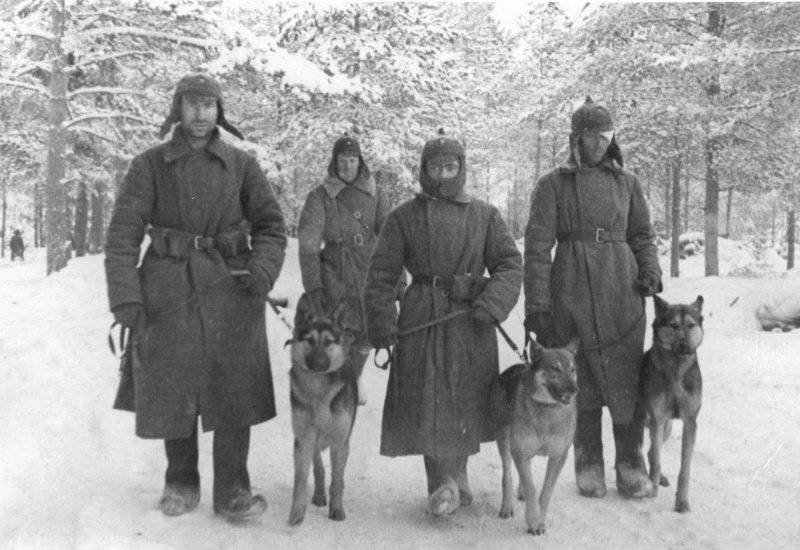
Dog service during the war was very different. Sled and health dogs have brought, perhaps, the most benefit. Under the fire of the fascists, on sledges, carts and trailers, depending on the season and the terrain conditions, dog sleds were taken from the battlefield to heavy wounded soldiers and brought ammunition to the units. Thanks to the training and ingenuity, the dog commands acted amazingly in concert. There are many stories about dogs from sledges on the Karelian front. In difficult wooded and swampy areas, among deep snow and difficult roads, which even horseback riding could not move, light sled teams became the main means of transport, delivering advanced food and ammunition, and evacuating wounded soldiers quickly and painlessly.
Alone the dogs made their way to places inaccessible to orderlies. Crawling up to the wounded, bleeding fighters, the four-legged friends substituted a medical bag hanging on its side. The soldier had to bandage the wound himself, after which the dog would go on. Their faultless instinct helped to distinguish a living person from a deceased person more than once. There are cases when dogs licked faces of fighters who are in a semi-unconscious state, bringing them to life. And in the harsh winters, the dogs warmed up the freezing people.
It is believed that over the years of the war, the dogs took out more than six hundred thousand seriously wounded officers, delivered about four thousand tons of ammunition to combat units.
About six thousand mine-searching dogs, along with their sappers-leaders, discovered and neutralized four million mines, land mines and other explosives. Having saved many human lives, the dogs have greatly assisted in demining large cities such as Belgorod, Odessa, Kiev, Vitebsk, Novgorod, Polotsk, Berlin, Prague, Warsaw, Budapest and Vienna. In total, they participated in the clearance of more than three hundred cities. They tested fifteen thousand kilometers of military roads. The fighters working with such dogs were firmly convinced that the sites and objects tested by their four-legged pets are completely safe.
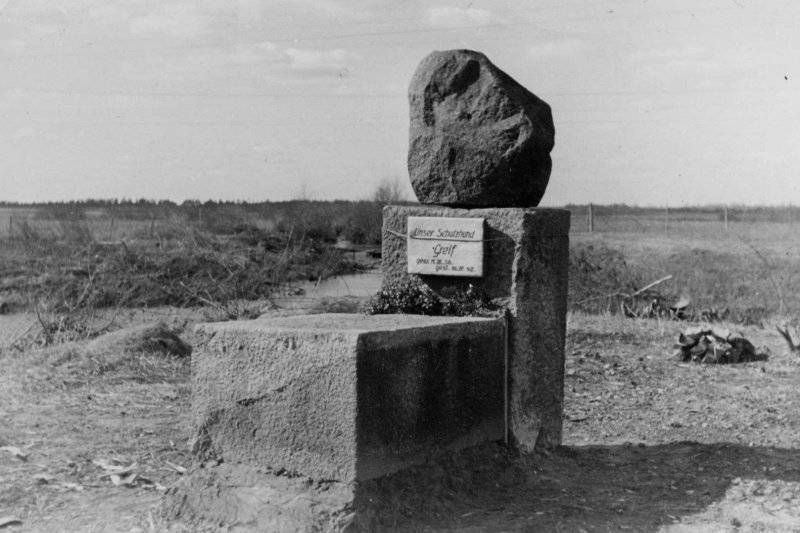
In a difficult situation, the dogs more than once rescued the fighters as signalers. The small size and high speed of movement made them difficult targets. In addition, in winter they were often dressed in white camouflage gowns. Under the hurricane machine-gun and artillery fire, dogs overcame impassable places for people, swam across the river, delivering reports to their destination. Trained in a special way, they acted mainly under the cover of darkness quickly and covertly, performing tasks that decided the fate of entire battles. There are cases when dogs resorted or crawled already being mortally wounded.
During the war years, dogs delivered more than 150 thousands of important reports, laid eight thousand kilometers of telephone wire, which is more than the distance between Berlin and New York. Another function was assigned to cohesive dogs. They were entrusted with the delivery of newspapers and letters to the front line, and sometimes even orders and medals, if there was no way to get through to the unit without loss.
The most terrible role, of course, was prepared for tank destroyers. During the war years, about three hundred successful explosions of fascist combat vehicles were carried out by four-legged fighters. Especially kamikaze dogs were noted in the battles at Stalingrad, Leningrad, Bryansk, on the Kursk Bulge and in the defense of Moscow. Similar losses, equal to two tank divisions, taught the Nazis to fear and respect shaggy opponents. There are cases when the enemy’s tank attack ended in a disgraceful flight, as soon as the dogs hung in the field of visibility of the fascists. Fast, inconspicuous dogs were very difficult to stop with machine-gun fire, attempts to use nets against them also failed. The animals instantly reached the dead zones, ran up to the tank from behind or dived under the moving fortresses, hitting one of the weakest points - the bottom.
Only by the end of 1943 year did the German tank crews learn how to kill dogs suddenly appearing in front of them. How many killed dogs performing similar tasks is not known for certain. I dare to suggest that a lot more than three hundred. Initially it was supposed to equip dogs with a special saddle with explosives. Being under the bottom of the tank, the dog had to bring the reset mechanism, in parallel activating the fuse, and return back. However, the use of such complex waste mines showed their inefficiency in real combat, after which they were abandoned.
The dogs were trained to the task, putting a bowl of food near the track-tracks of the established tank. In battle, dogs with attached mines were released from the trenches at a slight angle to the line of movement of enemy tanks. Well, then they instinctively fled under the tracks. If the dog was not killed on the way to the goal and did not fulfill the task, then our sniper, who was included only for this purpose in the dog squad, shot the bug to his owner for security reasons. So, for the sake of victory in a war, a man, with the help of deception, sent four-legged friends to certain death.
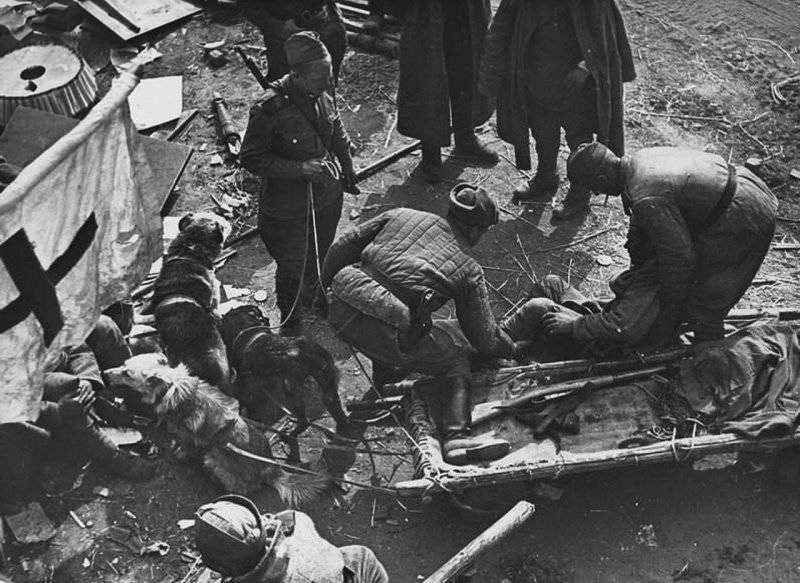
Separate tasks for kamikaze dogs were sabotage operations. They were used to undermine the trains and bridges, railway tracks and other strategic facilities. Subversive groups were preparing specifically. Specially created commission carefully checked each person and each dog. After that, the group was thrown into the rear of the Germans.
Dogs were also used for guard purposes. They found the fascists at night and in bad weather, they went into combat guard and sat in ambush. The four-legged friends didn’t bark and didn’t run to meet him when they detected the enemy. Only by the special tension of the leash and the direction of the body could a person determine the type and place of imminent danger.
Intelligence dogs, along with their counselors, successfully passed through the advanced positions of the Germans, discovered hidden firing points, ambushes, secrets, and helped in capturing "tongues." Well-coordinated teams of "man-dog" worked so silently, quickly and clearly that sometimes they did really unique things. There is a known case when a scout with a dog imperceptibly penetrated inside a fortress infested with the Germans, stayed in it and returned safely back.
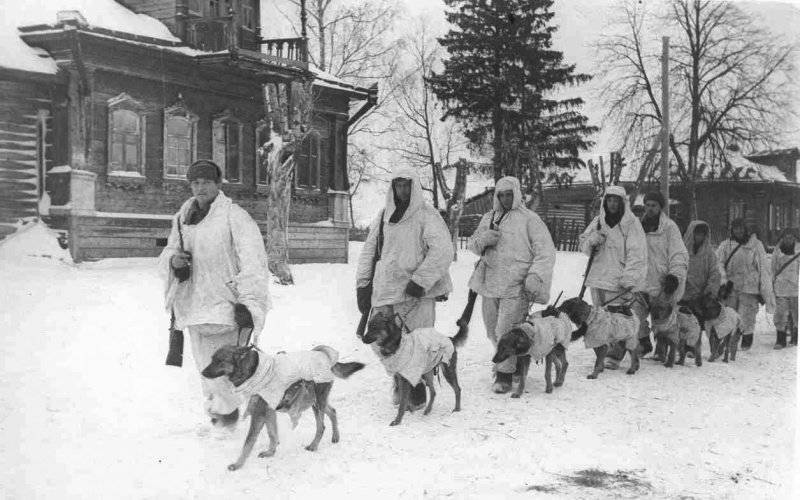
Dogs were used in the Smersh troops. They searched for enemy saboteurs, as well as disguised German snipers. As a rule, such a detachment consisted of one or two rifle divisions, a signalman with a radio station, an operational worker from the NKVD and a leader with a dog trained in search and service work.
Of course, not all front-line dogs were well trained. The skinny mongrets who came across to Soviet soldiers in the liberated cities often became living talismans of military units. They lived together with the people at the front, maintaining the fighting spirit of the soldiers.
The Great War proved the effectiveness of the use of service dogs in the army. In the postwar years, the USSR held the first place in the world in the use of dogs for military purposes. Our allies also used dogs in the service. The most beloved breed of the American military was the Doberman Pinscher. They were used on all fronts as scouts, messengers, sappers, demolition men and paratroopers. The four-legged favorites walked along perfectly and worked on patrol, stood to the end in the most hopeless position, were not afraid of fire or water, jumped over any obstacles, could climb ladders and perform many other useful functions. When these dogs were officially accepted into the US Marine Corps, some well-worn officers said indignantly: “See how far the Corps has come?”. However, life judged who was right. According to statistics, no Marine has died in the patrol, if the detachment led the Doberman. Not a single Japanese man could secretly penetrate at night into the location of parts of the marines, if they were guarded by four-legged guards. And where they were not, the attacks of the Japanese servicemen led to tangible losses. Subsequently, the Dobermans of the Marines received the terrible nickname "Devil Dog".
The French mostly used a smooth Beseron breed at the front. Being their pride, similar to the rottweilers, and to the Doberman dogs, only a few dozen remained after the war. It took considerable effort to find a few purebred Beauceron and revive the breed of French Shepherd Dogs.
For their feats, dog leaders received new titles, orders and medals. Their pets, who shared on a par with them all the military life, often in the heat of the war, were not supposed to receive any awards in the Soviet Union. At best, it was a sugar cube. The only dog awarded the “For Military Merit” medal is the legendary Djulbars. Americans also had an official ban on awarding any animals. However, in some countries, such as Great Britain, dogs were given ranks and awards were given. Everything was held in a solemn atmosphere like the ceremonies of awarding the person.
In 1917, Maria Dikin founded the Veterinary Charity Organization for the Care of Sick and Wounded Animals (PDSA) in England. In 1943, this woman established a special medal for any animals that distinguished themselves during the war. The first dog to receive the award was a British Spaniel named Rob, who completed over twenty skydiving, taking part in dozens of military operations. In total, during the war, eighteen dogs, as well as three horses, thirty-one pigeons and one cat, were rewarded with such a medal.
Today, even despite the rapid scientific and technical progress, dogs still remain in the service of the state, continuing to faithfully serve people. Trained dogs are necessarily included in the teams of the inspection teams at customs, they are used when patrolling cities, in search operations for firearms and explosives, including plastic.
One British bloodhound, nicknamed Tammy, adapted herself perfectly to find smuggling lots of valuable marine molluscs. She was sent to “customs service” in the customs in South America and literally in a couple of months she threatened the entire criminal business in the region. Desperate criminals "ordered" a dog, but fortunately the attempt failed. After that, for the first time in the world, the dog had several bodyguards. Armed guards watch the valuable dog twenty-four hours a day.
Information